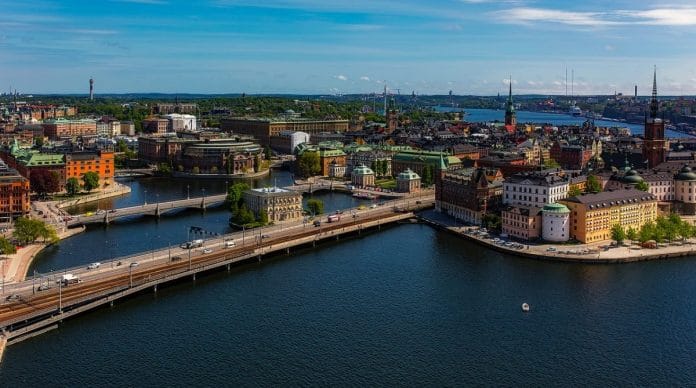By 2030, almost a third of all the energy consumed in the European Union must come from renewable sources, according to binding targets agreed in 2018. Sweden is helping lead the way.
As well as targeting 100% renewable electricity production by 2040, the country is transforming homes into highly efficient ‘prosumers’ – buildings which both produce and consume the vast majority of their own energy.
Meanwhile local ‘district heating’ plants are using excess heat to produce over 75% of the warmth that Swedish households need. The country also manages to combine the world’s highest carbon taxes with relatively cheap energy prices.
These are all reasons why Sweden tops the Forum’s Energy Transition Index – providing environmental leadership at a time when a Great Reset has never been more needed. Here’s how Sweden is building up local solutions in its energy revolution.
Naturally warm
54% of Sweden’s power comes from renewables, and is helped by its geography. With plenty of moving water and 63% forest cover, it’s no surprise the two largest renewable power sources are hydropower and biomass. And that biomass is helping support a local energy boom.
Heating is a key use of energy in a cold country like Sweden. In recent decades, as fuel oil taxes have increased, the country’s power companies have turned to renewables, like biomass, to fuel local ‘district heating’ plants.
In Sweden these trace their origins back to 1948, when a power station’s excess heat was first used to heat nearby buildings: steam is forced along a network of pipes to wherever it’s needed. Today, there are around 500 district heating systems across the country, from major cities to small villages, providing heat to homes and businesses.
District heating used to be fuelled mainly from the by-products of power plants, waste-to-energy plants and industrial processes. These days, however, Sweden is bringing more renewable sources into the mix. And as a result of competition, this localised form of power is now the country’s home-heating market leader.
Also read: Is your city becoming too dense? Take a cue from this floating village in Amsterdam
Energy ‘prosumers’
But Sweden doesn’t stop at village-level heating solutions. Its new breed of energy-generation takes hyper-local to the next level.
One example is in the city of Ludivika where 1970s flats have recently been retrofitted with the latest smart energy technology.
48 family apartments spread across 3 buildings have been given photovoltaic solar panels, thermal energy storage and heat pump systems. A micro energy grid connects it all, and helps charge electric cars overnight.
The result is a cluster of ‘prosumer’ buildings, producing rather than consuming enough power for 77% of residents’ needs. With high levels of smart meter usage, it’s a model that looks set to spread across Sweden.
Read more about Western Harbour and book a visit: https://t.co/ujSmVs9rNK
??? https://t.co/C5PuPziqIM
— Smart City Sweden (@SmartCitySweden) June 18, 2020
Scaling up
A recent development by E.ON in Hyllie, a district on the outskirts of Malmö, southern Sweden, has scaled up the smart grid principle. Energy generation comes from local wind, solar, biomass and waste sources.
Smart grids then balance the power, react to the weather, deploying extra power when it’s colder or putting excess into battery storage when it’s warm. The system is not only more efficient, but bills have fallen.
Smart energy developments like those in Hyllie, Ludivika, and renewable-driven district heating, offer a radical alternative to the centralized energy systems many countries rely on today.
The EU’s leaders have a challenge: how to generate 32% of energy from renewables by 2030. Sweden offers a vision of how technology and local solutions can turn a goal into a reality.
This article was originally published in the World Economic Forum.
Also read: Why our office buildings need to match the way we work in 2021







Description of the smart grid and smart meter with respect to Indian conditions and easy availability in major Indian cities, urban & rural.